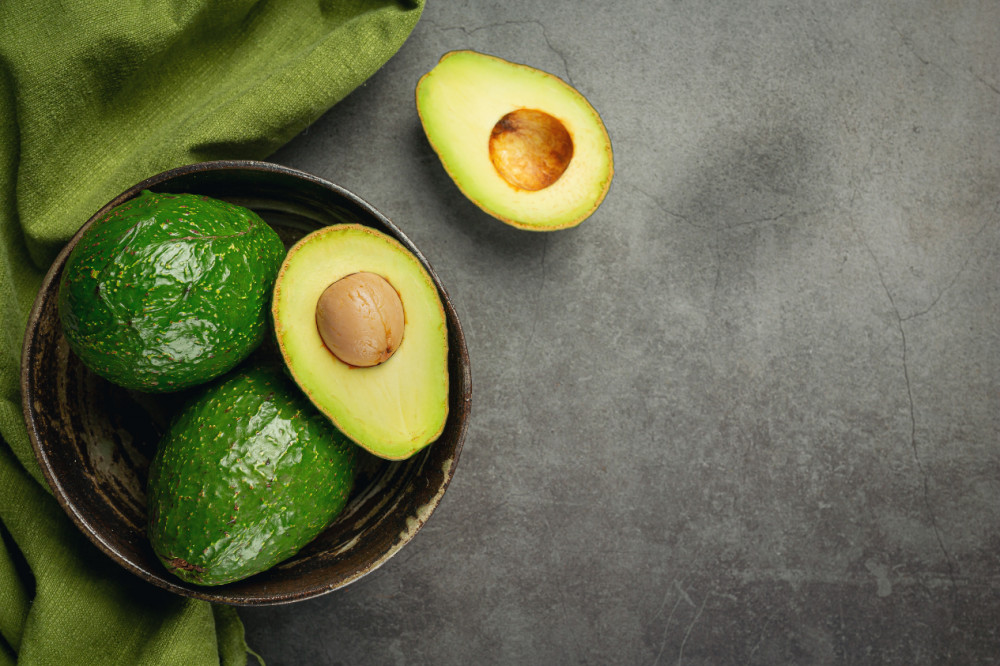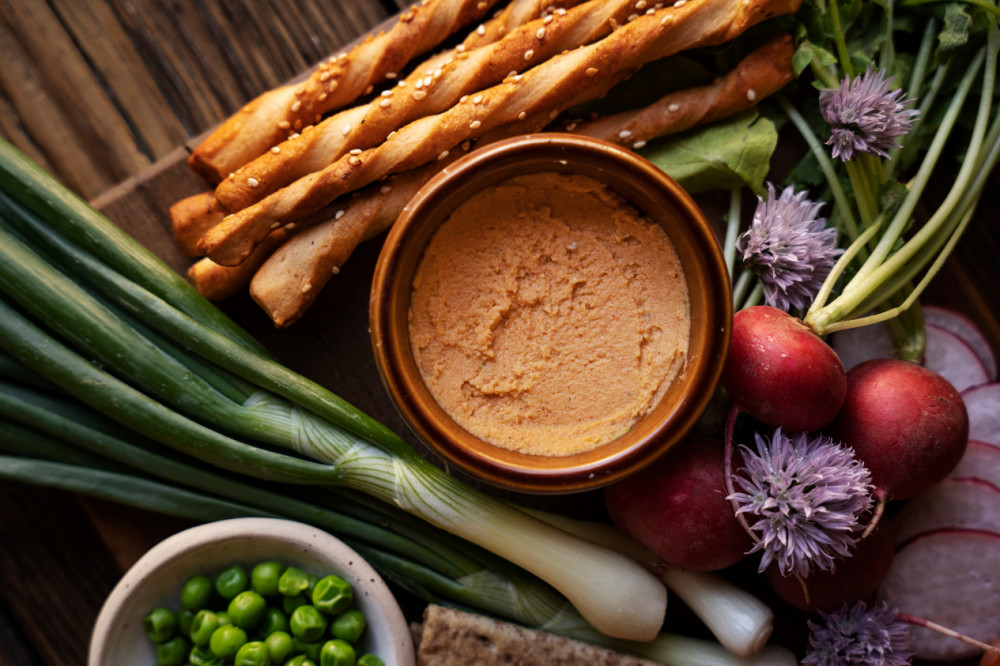
Sustainable Gastronomy Day

Every year on June 18th, the world pauses to celebrate Sustainable Gastronomy Day, a deliciously meaningful occasion that invites us to rethink the way we cook, eat and live. This isn't just about food, it is about green gastronomy - a movement that combines flavours with foresight, indulgences with intention and satisfaction with sustainability.
In a world of deforestation, climate change and food wastage posing a great threat, our kitchens are transforming into something powerful that will cause a change. Whether you are a Michelin-starred chef or a mindful home cook, sustainable cooking is one of the most convenient ways to reduce environmental footprint and make conscious choices that matter.
What is Sustainable Gastronomy?
Sustainable gastronomy is the food practices that are environmentally friendly, socially responsible and economically viable. It refers to the cuisine that considers the origin of ingredients, how food is grown, how it reaches the markets and how it is ultimately prepared and consumed. It is all about supporting local farmers, reducing carbon emissions, minimising food waste and preserving culinary biodiversity. In this global movement, green gastronomy is not just a culinary trend, it is a food philosophy rooted in people, planet and our palate.
Why Does Sustainable Cooking Matter?
- Reduces greenhouse gas emissions, like reducing food waste and opting for plant-based diets.
- Choosing locally sourced, seasonal ingredients can reduce the strain on natural resources.
- Promotes healthy eating - consumption of fresh & whole foods, which are rich in nutrients and overall health
- Choosing organic and locally sourced ingredients reduces exposure to harmful pesticides and other chemicals.
- Sustainable cooking helps promote a sense of connection to nature and community.
- Supports local farmers and businesses, empowers communities and reduces food waste.
So, how can we embrace green gastronomy and celebrate this special day meaningfully? Let’s dive into the delicious details with Foodism -
Leftover Vegetable Stir Fry with Brown Rice
Ingredients for Leftover Vegetable Stir Fry with Brown Rice:
- 1 cup cooked brown rice
- 1/2 cup chopped carrots
- 1/2 cup chopped beans
- 1/2 cup chopped bell peppers
- 2 tbsp soy sauce
- 1 tbsp sesame oil or olive oil
- 2 cloves garlic, minced
- 1 tsp grated ginger
- Salt and pepper to taste
Instructions to make Leftover Vegetable Stir Fry with Brown Rice:
- Heat oil in a pan and add garlic and ginger.
- Toss in all the leftover vegetables and stir-fry for 5–6 minutes.
- Add soy sauce, salt, and pepper.
- Stir in the cooked brown rice and mix thoroughly.
- Serve hot.
Pro Tip: Leftover Vegetable Stir Fry with Brown Rice tastes even better with a dash of chilli flakes or a splash of lemon juice.
Seasonal Millet Salad with Citrus Dressing
Ingredients for Seasonal Millet Salad with Citrus Dressing:
- 1 cup cooked pearl or foxtail millet
- 1/2 cup chopped cucumber
- 1/2 cup chopped tomatoes
- 1/4 cup pomegranate seeds
- 2 tbsp chopped fresh mint
- Juice of 1 orange or lemon
- 2 tbsp olive oil
- 1 tsp mustard
- Salt and pepper
Instructions for Seasonal Millet Salad with Citrus Dressing:
- Combine millet, cucumber, tomatoes, pomegranate, and mint in a bowl.
- Whisk orange juice, olive oil, mustard, salt, and pepper for the dressing.
- Pour the citrus dressing over the millet salad and mix gently.
Pro Tip: Chill the Seasonal Millet Salad with Citrus Dressing for 30 minutes before serving for a more refreshing taste.
Zero-Waste Carrot Top Pesto
Ingredients for Zero-Waste Carrot Top Pesto:
- 1 cup carrot tops (washed and stems removed)
- 1/4 cup nuts (cashews, almonds, or sunflower seeds)
- 2 cloves of garlic
- 1/4 cup olive oil
- Juice of 1 lemon
- Salt to taste
Instructions for Zero-Waste Carrot Top Pesto:
- Blend carrot tops, nuts, and garlic in a food processor.
- Drizzle in olive oil while blending until smooth.
- Add lemon juice and salt. Blend again.
Pro Tip: Use Zero-Waste Carrot Top Pesto as a dip, sandwich spread, or pasta sauce.
Jackfruit Tacos with Homemade Tortillas
Ingredients for Jackfruit Tacos with Homemade Tortillas:
- 1 cup young jackfruit (shredded)
- 1 tsp smoked paprika
- 1/2 tsp cumin
- 1/2 tsp chilli powder
- 1 tbsp olive oil
- Salt to taste
- Tortillas (homemade with whole wheat flour)
- Cabbage slaw for garnish
Instructions for Jackfruit Tacos with Homemade Tortillas:
- Heat oil and add spices and jackfruit.
- Cook for 10 minutes until tender and flavorful.
- Serve in homemade tortillas with cabbage slaw.
Pro Tip: Jackfruit Tacos with Homemade Tortillas pair beautifully with avocado salsa or pickled onions.
Chickpea Brine Chocolate Mousse (Aquafaba)
Ingredients for Chickpea Brine Chocolate Mousse (Aquafaba):
- 1/2 cup aquafaba (liquid from canned chickpeas)
- 100g dark chocolate
- 1/4 tsp cream of tartar or lemon juice
- Pinch of salt
Instructions for Chickpea Brine Chocolate Mousse (Aquafaba):
- Melt the chocolate and let it cool.
- Whisk aquafaba with cream of tartar until stiff peaks form.
- Fold in cooled chocolate gently.
- Chill for 2 hours before serving.
Pro Tip: Chickpea Brine Chocolate Mousse can be topped with nuts or fruit for texture.
Sweet Potato & Lentil Shepherd’s Pie
Ingredients for Sweet Potato & Lentil Shepherd’s Pie:
- 2 cups mashed sweet potatoes
- 1 cup cooked green or brown lentils
- 1/2 cup chopped carrots
- 1/2 cup peas
- 1 onion, chopped
- 2 cloves garlic, minced
- 1 tsp thyme
- Salt and pepper to taste
Instructions for Sweet Potato & Lentil Shepherd’s Pie:
- Sauté onions and garlic. Add carrots, peas, and lentils.
- Add thyme, salt, and pepper. Cook for 10 minutes.
- Place in a baking dish and top with mashed sweet potatoes.
- Bake at 180°C for 20 minutes.
Pro Tip: Sweet Potato & Lentil Shepherd’s Pie freezes well for batch cooking.
Saag with Seasonal Greens
Ingredients for Saag with Seasonal Greens:
- 2 cups chopped mixed seasonal greens (mustard, spinach, amaranth)
- 1 tbsp mustard oil
- 2 cloves garlic, minced
- 1/2 tsp grated ginger
- 1 green chilli
- Salt to taste
Instructions for Saag with Seasonal Greens:
- Blanch greens in boiling water, then drain.
- Sauté garlic, ginger, and green chilli in mustard oil.
- Add the blanched greens and cook for 5–7 minutes.
- Mash or blend to desired consistency.
Pro Tip: Saag with Seasonal Greens pairs well with bajra roti or makki di roti for a complete, sustainable meal.
Banana Peel Thoran
Ingredients for Banana Peel Thoran:
- 2 banana peels (well-washed and finely chopped)
- 1/4 cup grated coconut
- 2 green chilies, slit
- 1/2 tsp mustard seeds
- 1 dry red chilli
- 1 sprig of curry leaves
- 1 tbsp coconut oil
- Salt to taste
Instructions for Banana Peel Thoran:
- Heat coconut oil and add mustard seeds, dry red chilli, and curry leaves.
- Add green chillies and chopped banana peels. Sauté for 4–5 minutes.
- Add salt and grated coconut. Mix well and cook for another 2 minutes.
Pro Tip: Banana Peel Thoran is best served with steamed rice and dal for a traditional and sustainable South Indian meal.
Broken Wheat Upma with Scraps
Ingredients for Broken Wheat Upma with Scraps:
- 1 cup broken wheat (dalia)
- 1/2 cup assorted cleaned and chopped vegetable scraps (carrot peels, broccoli stalks, etc.)
- 1 onion, chopped
- 1 green chilli, chopped
- 1/2 tsp mustard seeds
- 1/2 tsp urad dal
- 1 tbsp oil
- Salt and water as needed
Instructions for Broken Wheat Upma with Scraps:
- Dry roast broken wheat and keep aside.
- Heat oil in a pan, add mustard seeds and urad dal.
- Sauté onion and green chilli, then add vegetable scraps.
- Add roasted broken wheat and water (2:1 ratio), season with salt.
- Cover and cook until the upma is soft and fluffy.
Pro Tip: Broken Wheat Upma with Scraps is an ideal breakfast or lunchbox recipe when you want to cook healthy and sustainably.
Coconut Shell Tea Cup Dessert
Ingredients for Coconut Shell Tea Cup Dessert:
- 1 cup coconut milk
- 2 tbsp jaggery (grated)
- 1 tsp agar agar or china grass
- 1/2 tsp cardamom powder
- Coconut shells for serving
Instructions for Coconut Shell Tea Cup Dessert:
- Heat coconut milk with jaggery and cardamom until it simmers.
- Dissolve agar agar in warm water and add it to the mixture.
- Pour the dessert into cleaned coconut shells and refrigerate until set.
Pro Tip: Coconut Shell Tea Cup Dessert is perfect for eco-themed parties and garnishes beautifully with roasted coconut flakes.
Sustainable Gastronomy Day reminds us that every meal is a chance to vote for the world we want. When we practice green gastronomy, we’re not just feeding our bodies—we’re feeding a movement. A movement toward food systems that nourish the earth, honour traditions, and uplift communities.
And the best part? Sustainable cooking doesn’t require perfection—just intention. Small steps like eating local, minimising waste, and valuing every bite can lead to big changes over time.
If you have any such creation, download Foodism and share it now!




